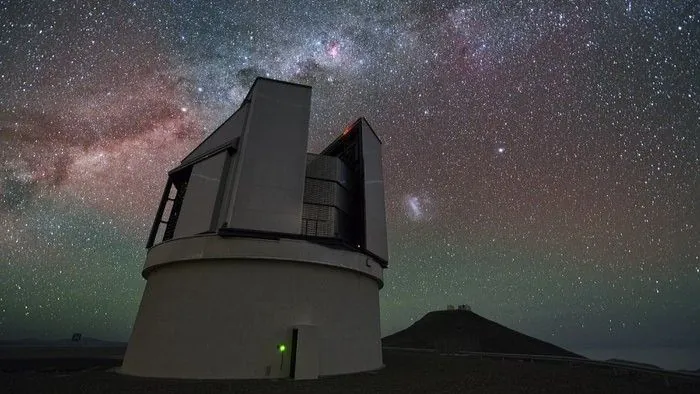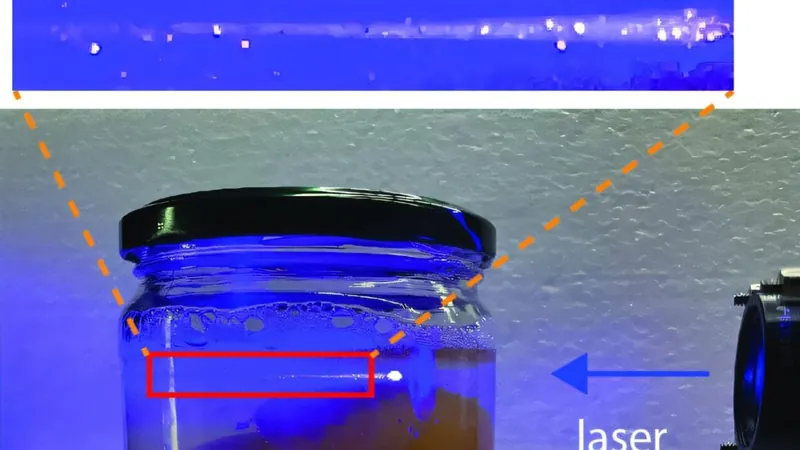
Astronomers Unveil Groundbreaking Infrared Map of the Milky Way, Revealing 1.5 Billion Celestial Objects!
2024-09-26
Author: Jessica Wong
In a stunning achievement that could redefine our understanding of the cosmos, astronomers have successfully created the most detailed infrared map of the Milky Way galaxy to date. This monumental project spanned 13 years and encompassed observations over 420 nights, leading to the astonishing discovery of more than 1.5 billion celestial objects.
The monumental map, compiled from an impressive 200,000 images captured by the European Southern Observatory's (ESO) Visible and Infrared Survey Telescope for Astronomy (VISTA) in the breathtaking landscapes of Chile, was unveiled in a publication on September 26 in the prestigious journal Astronomy & Astrophysics.
"We made so many discoveries; we have changed the view of our Galaxy forever," declared Dante Minniti, the lead project scientist and an astrophysicist at Universidad Andrés Bello in Chile. His excitement reflects the depth of knowledge gained through this extensive survey.
Using the advanced VISTA InfraRed CAMera (VIRCAM), the astronomers peered through thick clouds of dust and gas that shroud the Milky Way, uncovering radiation from previously unnoticed celestial entities. This innovative approach allowed them to detect not only stars but also “failed stars” — the enigmatic brown dwarfs that sit tantalizingly between the categories of giant planets and small stars — as well as rogue planets drifting freely in space.
The findings also revealed intriguing hypervelocity stars, which have been propelled from close encounters with the galaxy's supermassive black hole, a phenomenon that challenges existing theories about stellar formation and dynamics. The VIRCAM's capability to conduct repeat observations within various regions of the sky enabled researchers to track the movements of these objects and monitor how their brightness fluctuated over time.
This groundbreaking survey not only sheds light on the composition of our own galaxy but also raises questions about the broader implications for our understanding of galaxy formation and evolution across the universe. The depth and breadth of data obtained through this infrared mapping could transform future astronomical research and deepen our comprehension of our cosmic neighborhood.
Stay tuned for forthcoming studies that will explore the newly discovered phenomena more deeply and possibly uncover other celestial secrets hidden in our galactic backyard!


 Brasil (PT)
Brasil (PT)
 Canada (EN)
Canada (EN)
 Chile (ES)
Chile (ES)
 Česko (CS)
Česko (CS)
 대한민국 (KO)
대한민국 (KO)
 España (ES)
España (ES)
 France (FR)
France (FR)
 Hong Kong (EN)
Hong Kong (EN)
 Italia (IT)
Italia (IT)
 日本 (JA)
日本 (JA)
 Magyarország (HU)
Magyarország (HU)
 Norge (NO)
Norge (NO)
 Polska (PL)
Polska (PL)
 Schweiz (DE)
Schweiz (DE)
 Singapore (EN)
Singapore (EN)
 Sverige (SV)
Sverige (SV)
 Suomi (FI)
Suomi (FI)
 Türkiye (TR)
Türkiye (TR)
 الإمارات العربية المتحدة (AR)
الإمارات العربية المتحدة (AR)